Cattle rancher who’s seen 500,000 migrants cross his border property reveals the sick tricks used by cartels to earn them $3.5 MILLION a day
As far as the eye can see, there is nothing but brown border fence, red dirt, low-growing desert shrubs, and the occasional sweatshirt, water bottle, or child’s toy. The trash is new, and there are fresh footprints in the dust—people were just here.
This stretch of the Arizona border, near the tiny hamlet of Sasabe, is part of the Tucson Border Patrol map. It is one of the busiest areas in the country for border crossers looking to avoid capture.
John Ladd, a cattle rancher from Arizona, told DailyMail.com that the situation at the border is not just bad, but “this is the worst it’s ever been.”
His family has owned a cattle farm on the border since he took over the property in the 1890s. Ladd says he regularly has to repair cut fence wire and retrieve escaped cattle as a result of illegal migrant activity when they cross his property.
He estimates that his 16,000-acre ranch, bordered by more than 10 miles of border wall, has been the preferred route for at least 500,000 migrants in the past 30 years, based on his own count and consultations with Customs and Border Protection.
Rancher John Ladd, 68, whose family has owned a ranch on 16,000 acres on the Mexican border for 127 years, is speaking out about the problems he and, to a greater extent, the country faces with regard to cartel-run human trafficking.
And an election-year executive order from the Biden-Harris administration to secure the border with “safe and orderly pathways” has not significantly slowed the flow of migrants, Ladd told DailyMail.com.
“As soon as Biden got elected, the door opened. It’s, you know, it’s intentional to let them in,” the lifelong desert dweller said.
Yet recent figures from Customs and Border Protection (CBP) show that confrontations along the border have declined since the White House imposed new immigration restrictions in June, limiting the number of asylum seekers allowed into the country.
Data from the CBP shows that there were just over 58,000 encounters in July.
That huge number, while lower than in previous months, is evidence of the explosive growth of the Mexican cartels, Ladd told DailyMail.com.
“The cartel makes about three and a half million a day from the fees illegal immigrants pay to enter the country, and you can’t enter the country without the cartel’s approval.”
And the criminal smugglers have turned the border crossing into the US into a well-organized and efficient operation, the rancher said.
“They adapted. They were completely camouflaged,” he said. “We don’t have asylum seekers. We have runners and shooters.”
‘They wear carpeted shoes and carry baklavas. They are accompanied by a scout mobile phone.’
Some of the cartel’s camouflage-clad smugglers – known as “coyotes” – were spotted by DailyMail.com on a rural stretch of the US-Mexico border wall where it ends just short of a Native American reservation.
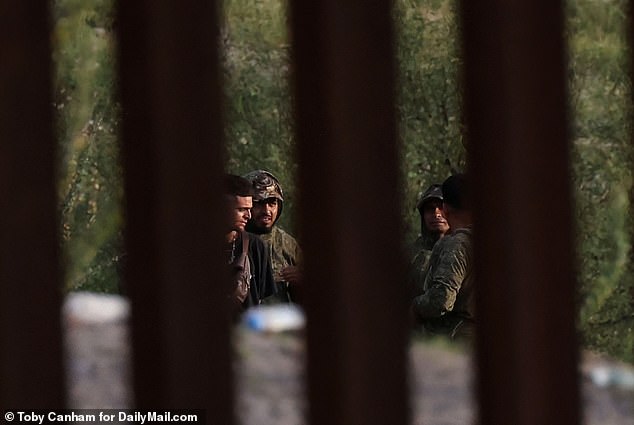
Apparently cartel human smugglers, “coyotes,” are standing guard on the Mexican side of the U.S.-Mexico border, waiting for a chance to drop off migrants in the U.S. at a spot where the massive border wall ends in rural Pima County, Arizona
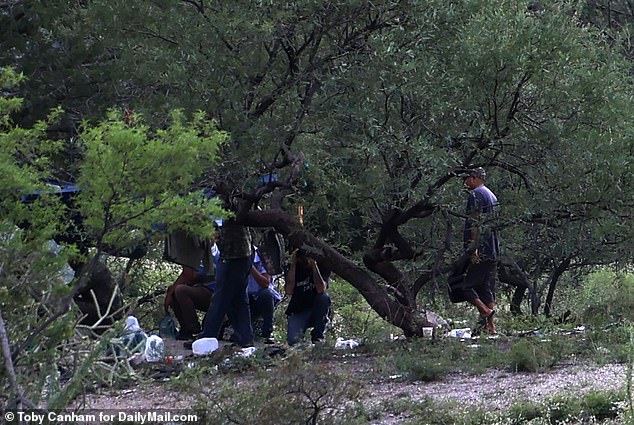
A group of migrants and smugglers have set up shop just metres from a gap in the border wall
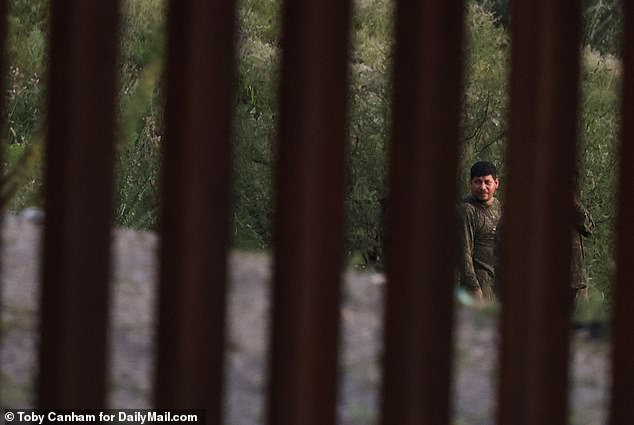
Some of the cartel’s camouflage-clad smugglers — known as “coyotes” — were spotted along a rural stretch of the U.S.-Mexico border wall where it ends just short of a Native American reservation.

They were accompanied by a group of migrants who appeared to have set up a cross near the huge hole in the wall
They were accompanied by a group of migrants who appeared to have set up camp near the huge hole in the wall where it ends just before an Indian reservation.
Aid workers were spotted filling the tents with snacks and water.
They also checked a Starlink WiFi box, which had been set up at the edge of the border (and of civilization, for that matter) to provide internet access to recent migrants.
A worker was spotted approaching a young boy on the other side of the border where the gap for the reservation was. A coyote was nearby and was watching the interaction.
The staff were from the Tucson Samaritans and Doctors Without Borders and were there to provide humanitarian aid.
Both groups declined to comment for this report.
Meanwhile, the cartels are busy waging war with each other over the land surrounding Sasabe, including the lucrative crossing routes, Ladd said.
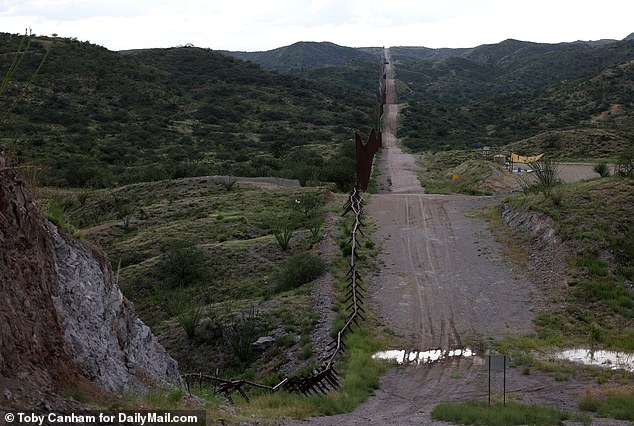
The huge gap in the boundary wall for the reserve can be seen opposite the pre-established shelters
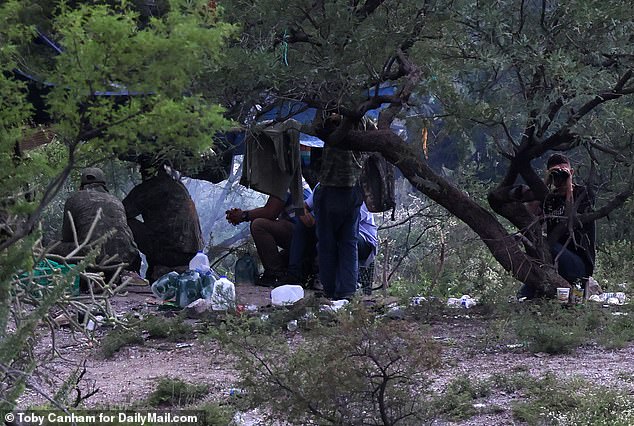
As DailyMail.com looked at the migrant camps, some looked on with support
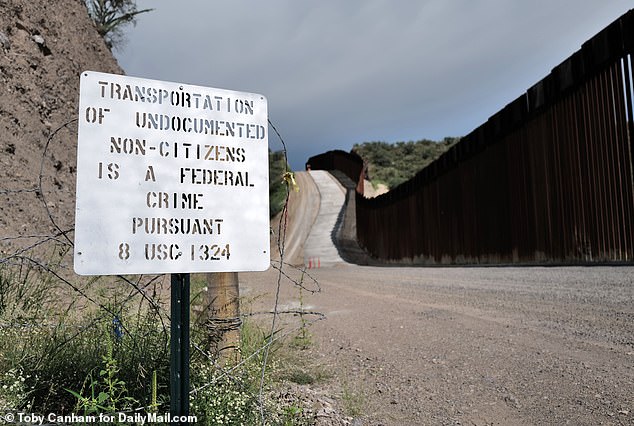
The road along the border from Sasabe, Arizona, to the end of the border wall at the reservation was dozens of miles long, a perilous journey for any recent migrants crossing the border.
He explained that the conflict has been going on for three months, with many people killed and buildings set on fire.
And a man with more than 20 years of experience in the Tucson sector says the number of illegal border crossings in the area is increasing.
The Tucson sector is currently the busiest when it comes to encounters and escapes, migrants whose footprints or tracks have been found but never apprehended, Art Del Cuerto, a board member of the National Border Patrol Council, told DailyMail.com.
He said an estimated 2 million+ people have fled since Biden took office.
In addition, the number of patrol officers there is overloaded, as many officers are tasked with processing asylum applications from migrants.
As for the June executive order, it has not changed much for local people, he said.
“That’s a political stunt, and it’s only been delayed because we’re in the summer rainy season, and it’s been hot, and we’ve had flooding and thunderstorms, so it’s slowed down a little bit.”
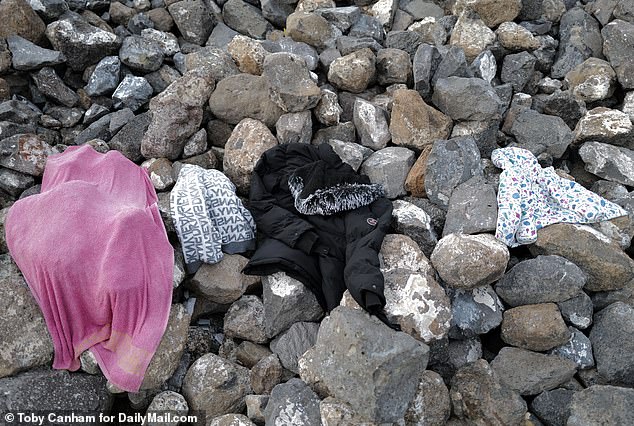
Clothing – including children’s clothing – discarded by migrants on the American side of the wall
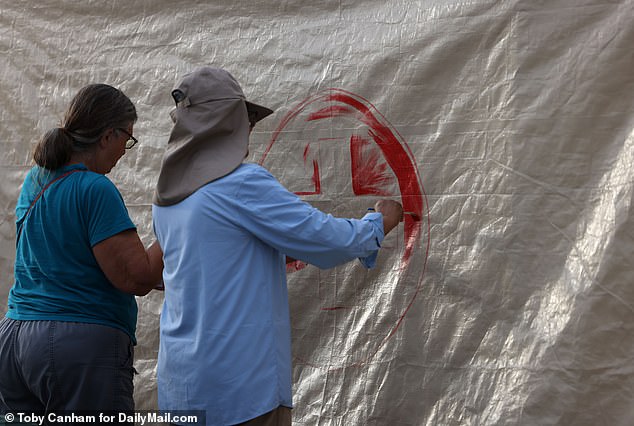
Aid workers paint a tent with a red cross at the gap in the border wall east of Sasabe
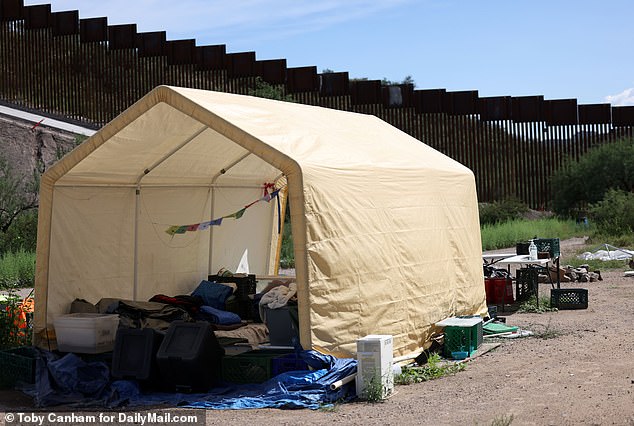
An abandoned aid tent lies idle just yards from the U.S.-Mexico border
Ladd, however, is not opposed to immigration reform and indicated that he has personally sponsored citizenship for three men.
“We need people to come to America to do the work that Americans don’t want to do anymore, but to do it legally,” Ladd said.
“It doesn’t matter if you’re from Mexico or Russia, you’re going to be screened. You’re coming to America, and that’s fine, but don’t sneak in the back door and don’t trust politicians to grant you amnesty.”
